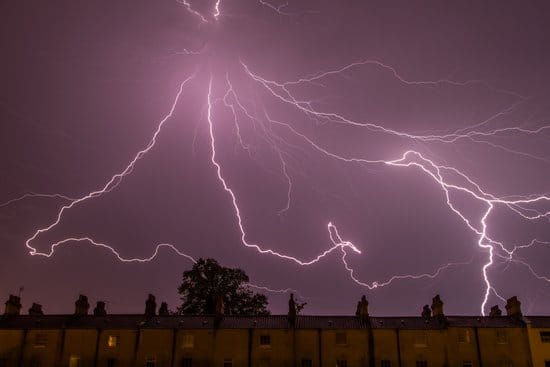The flash of light and the crack of thunder can be scary and impressive, but it can also be deadly. Do you know what to do if a storm approaches?
Many of us still don’t know the danger posed by thunderstorms. The National Weather Service reports an average of 49 lightning fatalities per year, with 27 in 2015. Florida leads the nation in lightning deaths, followed by Texas. Many hundreds of others survive a strike, suffering varying debilitating injuries, some for the rest of their lives.
Lightning strikes the United States more than 25 million times a year. It is one of the most erratic and unpredictable elements of thunderstorms. Most victims aren’t struck during the most intense part of a storm; they are usually injured right before or after the main part of the storm passes. This is because a bolt can strike as far as 10 to 25 miles away from the parent thunderstorm and most people don’t seek shelter until the storm’s full fury. That’s why the lighting safety slogan goes, “When thunder roars, go indoors.” It’s recommended that you stay indoors until 30 minutes after the last thunderclap is heard.
Oh, and the myth that lightning never strikes the same place twice is false. Any tall tree, structure or tower that is isolated can be struck over and over. The Empire State Building is reportedly hit nearly 100 times a year.
It’s imperative that you and your family know what to do when a storm approaches. The National Weather Service has these important safety tips:
- No place outside is safe
- Seek immediate shelter inside a building or a vehicle (open-sided stands or vehicles like golf carts don’t offer any safety, neither do convertibles, even with the top up)
- Don’t seek shelter under trees
- Get out of and away from bodies of water immediately
- Stay away from objects that conduct electricity like metal towers, barb wire fences, power lines or windmills (these cows were killed when an electrical discharge traveled through the fence where they were lined up)
Even in your home, lightning can still be a danger. Here are safety tips for when you are indoors during a storm:
- Stay away from windows and off porches
- Don’t touch or stand near metal pipes and plumbing, don’t wash your hands, take a shower, do dishes or laundry
- Avoid using corded phones (most home lightning injuries come through charged phone lines)
- Stay away from electrical devices like TVs, washer/dryers
Lightning damage to property and homes can be costly. Make sure you are covered.
This article is furnished by California Casualty, providing auto and home insurance to educators, law enforcement officers, firefighters and nurses. Get a quote at 1.866.704.8614 or www.calcas.com.
- California Casualty Earns Financial Stability Rating® of A, Exceptional, From Demotech, Inc. - April 28, 2025
- Music & Arts Grant Recipients – 2024 - December 13, 2024
- Understanding Auto and Home Insurance Rate Changes - December 3, 2024

